Melatonin for Babies
29 hours of research 4 minute read

While melatonin was previously used exclusively by the adult population, manufacturers have now started producing melatonin in a form that babies can also consume. There are several reasons for recommending melatonin to neonates, which will be discussed further in this article.
What is Melatonin?
Melatonin is a commonly prescribed remedy for different forms of sleep problems. However, several factors must be considered before recommending melatonin, particularly to the pediatric population. These may include the type of sleep disorders, the length of melatonin therapy required, the age of the individual, and their health status. (1) (2)
This hormone is naturally produced in the pineal gland and is associated with the regulation of the sleep-wake cycle of an individual. (3) Its secretion is triggered by the detection of darkness by the sensors in the eye, which sends signals to the hypothalamus. The stimulation of the hypothalamus then leads to melatonin secretion from the Pineal gland. However, the role of melatonin n the body is not only limited to the maintenance of the sleep-wake cycle but is also involved with the sexual maturation and secretion of growth hormone in an individual. (4)
An individual usually secretes between 5 and 25mg of melatonin every night. (5) The exact role of melatonin in the sexual development of an individual is still under investigation by experts, and further research is required to understand the mechanism. (6)
While melatonin is produced in the body naturally, individuals may also be able to consume it externally in the form of synthetically prepared compounds. There have been concerns about the purity of the melatonin products available in the market and the percentage of contaminants that may be contained in them. These may include serotonin and tryptophan compounds. This is a source of concern because tryptophan-containing products may lead to syndrome-like Eosinophilia-myalgia syndrome, which may be a source of morbidity and mortality. This is why it is essential to consume melatonin products from a well-reputed brand or after the prescription of a health professional. Melatonin supplements are commonly used in many countries, most of which are FDA-approved. (7) (8)
Role of Melatonin in Baby Milk
As mentioned previously, melatonin plays a significant role in regulating sleep due to its effect on the circadian rhythm. This is present naturally in the breast milk of a lactating mother, in which higher levels are seen during the night and low levels during the day. (9)
Hence, the rising and lowering levels of melatonin in breast milk may help the lactating infant know about the time of the day it is and allow them to set their sleep-wake cycle accordingly. This is until they can set up their circadian rhythm. However, to allow the milk to set their sleep-wake cycle, the milk during the night should be given in complete darkness. This is because the bright settings and lighted rooms can lower the melatonin production in the breast milk, which would mean a lower melatonin level in the baby at night. This would cause them to stay awake at night and feel tired and irritable the next day. If the milk is being obtained from a donor or a milk bank, it is important to ask them if the milk was obtained during the daytime or nighttime. This is due to the different melatonin levels found during the day and night. It is ideal for feeding the baby at night with milk obtained during the night, while the milk obtained during the day should be given to the baby during the day to stay active.

Recent developments in milk formulas for neonates have also introduced formulas fortified with melatonin. For most of these formulas, the milk designed for daytime is different in composition compared to milk designed for nighttime. As mentioned earlier, the major difference between these two formulas would be the concentration of melatonin. These milk formulas may either contain pure Melatoninc, analogs of melatonin, or even its precursors, which can later be converted into melatonin in the baby’s body.
There has been an increasing awareness and interest in milk formulas containing melatonin globally. This has also led to a number of studies being conducted on its effectiveness. In one such study conducted as a double-blind study, 30 infants were included as study participants. The study was conducted over a period of three weeks, and the infants were aged between 4 weeks and 20 weeks. As reported by their parents, the major problem experienced by the infants was difficulty in sleeping. These babies were given milk during the day that contained low levels of tryptophan, which is the major precursor of Metaonin. The level of tryptophan included in the day milk was 1.5 g per 100 grams of protein.
On the other hand, the milk-fed to the babies during the night contained higher levels of tryptophan to allow a higher melatonin percentage in the babies during the night. The concentration of tryptophan included in the night milk was nearly 3.4 grams per 100 grams of protein in the milk. The study results showed that when neonates consistently received day and night milk throughout the study, they significantly improved their sleep patterns. Not only was the total sleep quality improved, but improvements were also seen in sleep efficiency, sleep latency, and nocturnal awakening. (10)
Other Benefits of Melatonin for Babies
While regulation of sleep is the major benefit of adding melatonin to the baby formula, studies have also found this to be associated with other benefits. These include protecting infants from oxidative damage, sepsis, and respiratory distress.
Newborn babies or those born before their time usually have lower protection against the damage caused by oxidative stress making them more susceptible to free radical damage. Melatonin has the ability to act as an antioxidant in the body, which allows it to remove the free radicals and protect the baby against oxidative stresses and associated damage. The reduction of oxidative stresses may also benefit babies with asphyxia, sepsis, and respiratory distress. (11)
The role of melatonin in babies with asphyxia was further investigated in a study conducted on 20 infants who had been diagnosed with perinatal asphyxia. The study results showed that the infants who had been given 80 mg of melatonin in 8 doses had significant improvement in their health status. This was due to a reduction in the nitrite and malondialdehyde levels calculated at 12 and 24 hours. While out of the ten infants who were not given melatonin, three died of asphyxiation. (12)
The effectiveness of Metatonin for Sepsis was also investigated in several studies. One such study was conducted as a randomized clinical trial on 20 newborns diagnosed with sepsis. These newborns were divided into two groups on the basis of the interventions they were going to receive. 10 infants received 20 mg melatonin, which was divided into two doses of 10 mg each. The results showed that the melatonin given to the septic children was able to save their lives, as none of the babies died. This was suggested because of this infant’s lower levels of oxidative stress as judged by the levels of lipid peroxidation products. On the other hand, the group not given melatonin encountered three deaths. (13)
Another benefit of melatonin as a powerful antioxidant for the body is its ability to manage respiratory distress syndrome in newborns. The effectiveness of melatonin for respiratory distress syndrome was investigated in a randomized study, which included a total of 74 newborns. These newborns were diagnosed with grade 3 and 4 respiratory distress syndrome. As an intervention, they were given melatonin divided into ten doses. However, these were only given to 40 of the newborns, while the remaining 34 were given a form of placebo. The group that was given melatonin was observed to have significant improvement in their symptoms compared to the group on placebo. (14)
Best Formulas To Help Babies Sleep
✓Contains Probiotics & Prebiotics
✓ No sugar, no corn syrup, no soy
✓ No starch
✓ HiPP's most popular formula
Check Price✓ Clean formula ingredients
✓ No palm oil
✓ Contains DHA, & ALA
✓ Popular for babies alergic to cow's milk
Check Price✓ Clean formula ingredients
✓ Demeter biodynamic certified
✓ Contains natural whey, DHA, & ALA
✓ Holle's most popular cow formula
Check PriceMelatonin for Babies
Melatonin is a natural chemical produced in the body known for its sleep modulation, analgesia, and antioxidation properties. Several studies have investigated these therapeutic properties, which have found them to be highly effective - particularly for the pediatric population. Over the past few years, as the awareness of the therapeutic potential of melatonin has increased, brands have also started adding this to their milk formulas. There may be different forms of milk formulas specially designed for the day and night. The major difference between them is the concentration of melatonin. These changing melatonin levels available to the baby during the day and night will help set up the sleep-wake cycle until the body can set up its circadian system. However, besides assisting the babies with their sleep cycle, melatonin may also prevent oxidative stresses and protect them from conditions like sepsis and respiratory distress syndrome.
For parents seeking melatonin for babies 6 months or melatonin for babies under 1 year old, many consider specialized options such as liquid melatonin for babies or melatonin drops for babies. These formulations cater to the specific needs of infants, ensuring a safe and appropriate dosage for their age group. Always consult with a healthcare professional before introducing any new supplements to your baby's routine to ensure the best care for their well-being.
Most Popular Formula For Babies That Don't Sleep
Organic Life Start is committed to providing accurate, reliable, and trustworthy information to parents and caregivers. We carefully choose credible sources and follow a meticulous fact-checking process to uphold the highest standards in infant nutrition and parenting advice. To learn more about our dedication to accuracy, please explore our editorial guidelines.
Link To Sources
- https://jppt.kglmeridian.com/view/journals/jppt/26/1/article-p4.xml
- https://www.bmj.com/content/332/7538/385
- https://www.sciencedirect.com/science/article/abs/pii/S0731708500002594?via%3Dihub
- https://journals.plos.org/plosone/article?id=10.1371/journal.pone.0000721
- https://www.dovepress.com/could-long-term-administration-of-melatonin-to-prepubertal-children-af-peer-reviewed-fulltext-article-NSS
- https://ebm.bmj.com/content/21/2/79
- https://www.nature.com/articles/pr2001258
- https://www.thieme-connect.de/products/ejournals/abstract/10.1055/s-2004-828610


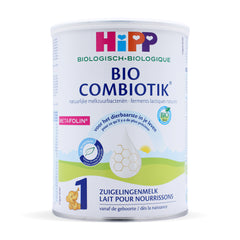
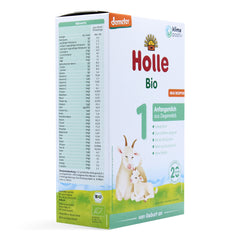
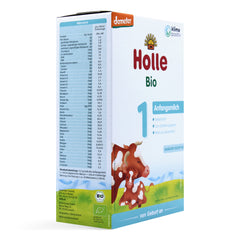
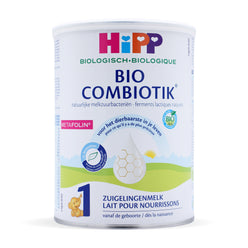
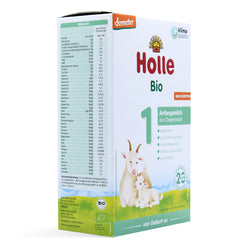
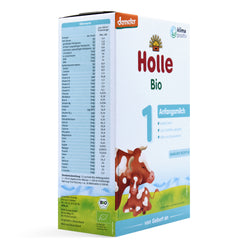
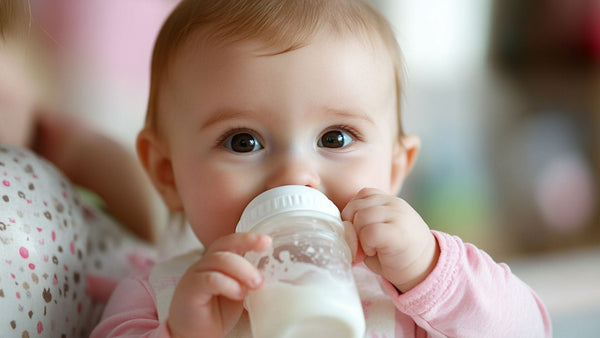





Kallie -
This reminds me of when my baby was going through a really fussy, irregular sleep phase around 4 months old. We tried sticking to a consistent bedtime routine — dim lights, quiet time, no screens — and it slowly helped her start sleeping more regularly, though not perfectly. When I later read about using supplements like melatonin, I hesitated because I felt uneasy about giving hormones to such a young child. In the end we didn’t use melatonin, and while sleep still took time, the gradual habit‑based approach seemed safer and less stressful for us — even if it required patience.
Aileen -
November 13, 2025
What really helped my baby wind down at night was keeping the lights low and playing gentle music—it created such a calm routine. I also noticed he slept more soundly after switching to HiPP Dutch formula, so maybe it could help someone else too!
Daniela -
October 09, 2025
I’ve always been curious about using melatonin for babies, especially during tough sleep regressions, but it honestly makes me a bit nervous. Most pediatricians I’ve spoken to say it’s better to focus on natural sleep habits first (like consistent bedtime routines and dim lighting) before considering any supplements. Babies’ sleep cycles are still developing, and introducing melatonin too early might interfere with that process. I’ve found that simple changes like earlier bedtime and white noise worked better for us. It’s tempting to look for quick fixes when you’re exhausted, but it’s reassuring to know that patience and routine usually pay off. Still, I think melatonin could have a place in rare cases, but only under a doctor’s supervision.